Want new employees to thrive during those crucial first months?
Onboarding documents are key.
Onboarding documents set expectations, provide crucial guidance, and help new hires navigate their roles seamlessly.
To help you empower new employees from day one, we explore 20 must have onboarding documents — including tips and best practices.
Let's get started.
Why Onboarding Documents Matter
Onboarding documents are essential, here's why:
- Streamline data collection: Getting paperwork out of the way early ensures hiring teams have more time to focus on training and integrating new employees into the company.
- Clear-up expectations: By providing a clear framework for the employee-employer relationship, onboarding documents prevent misunderstandings.
- Minimize risk: By ensuring compliance with employment laws, onboarding documents safeguard your company against costly fines, penalties and legal battles.
-
Promote employee integration: Onboarding documents facilitate the successful transition of new hires into their roles by clarifying crucial information such as company culture, team dynamics, job expectations and more.
20 Onboarding Documents for New Employees
Below, we cover our top 20 picks to help you support new hires and pave the way for a rewarding employee-employer relationship.
1. Offer Letter
An offer letter formally provides a promising candidate with all the information they need to either accept a position, negotiate or move on. As such, it typically includes the following details:
- Job title
- Job description
- Job Location ( remote, hybrid, in-office)
- Job type (full-time, part-time)
- Job details
- Benefits and Compensation
- Contingencies and conditions
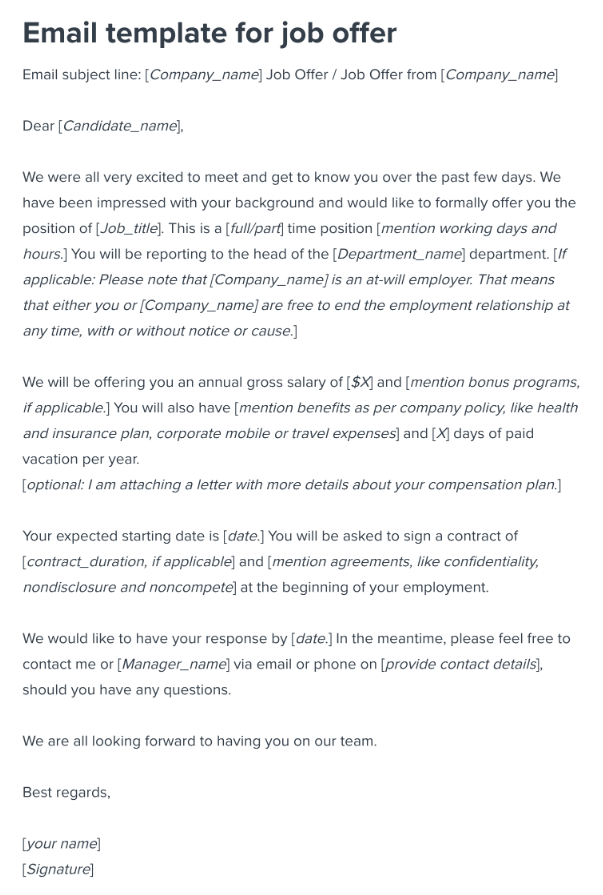
Tips and Best Practices
- Explain everything a potential candidate needs to know about the role and its expectations.
- Include a statement that the offer letter supersedes any other verbal discussions. This protects your business in the case of any misunderstandings or inconsistencies during the interview process.
- Refrain from including statements or promises related to termination or compensation, as these can cause legal complications
- Give a candidate a reasonable amount of time to consider the offer.
2. Contract of Employment
An employment contract is an agreement between an employer and employee. It is governed by employment laws and outlines the conditions both parties need to uphold during the employment term.
As a legal document it generally covers the following:
- Employee details
- Role description and expectations
- The employment term
- Working hours
- Workplace conduct and policies
- Contract termination
- Compensation
- Disputes
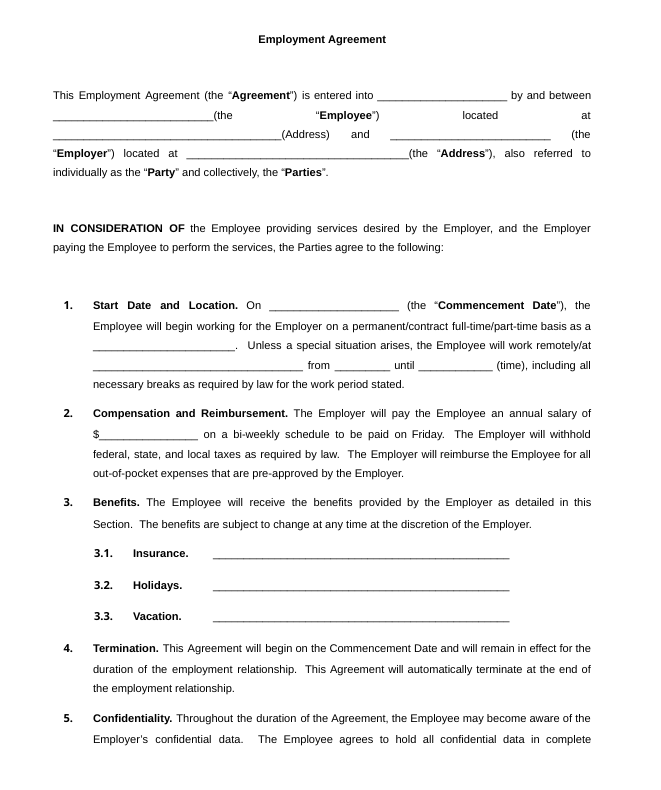
Tips and Best Practices
- Include all aspects of the contract from the outset.
- Seek legal counsel for complex contracts.
- Consult your legal team to ensure that your employment contracts comply with all relevant labor laws and regulations.
- Use plain, simple language to aid understanding.
- Give new hires a reasonable timeframe to review the contract.
3. Non-Disclosure Agreement (NDA)
A non-disclosure agreement is a contractual agreement that prevents an employee from disclosing your company's proprietary information. The agreement remains valid even after their employment ends, protecting your company's valuable intellectual property.
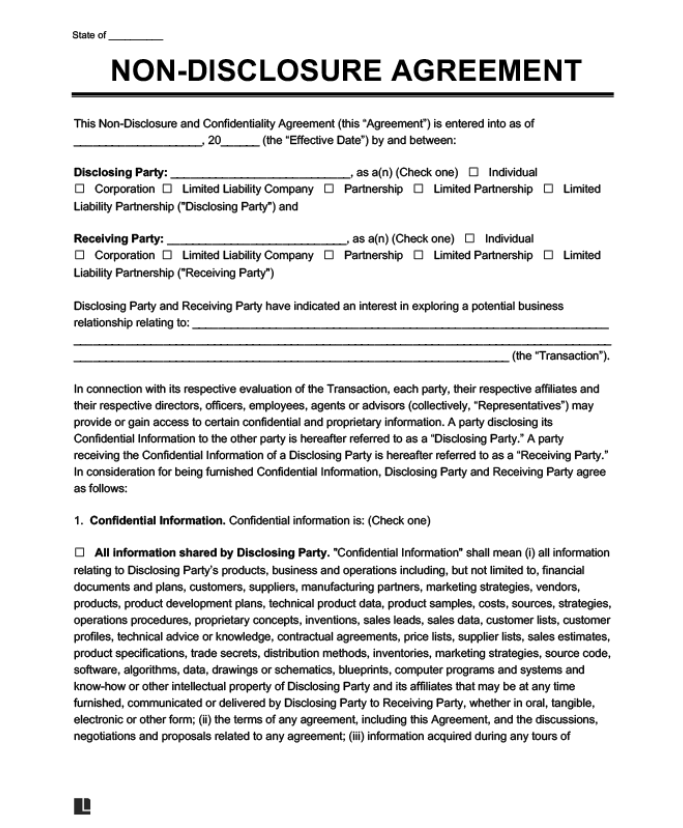
Tips and Best Practices
- Seek legal counsel to ensure that your NDAs comply with applicable location-specific laws and requirements.
- To avoid legal complications, confidential or proprietary information must be clearly defined.
4. Employee Information Forms
Employee information forms allow you to compile accurate and comprehensive employee records. By centralizing key personal and financial and details, these records serve as the starting point for streamlined HR and administrative processes.
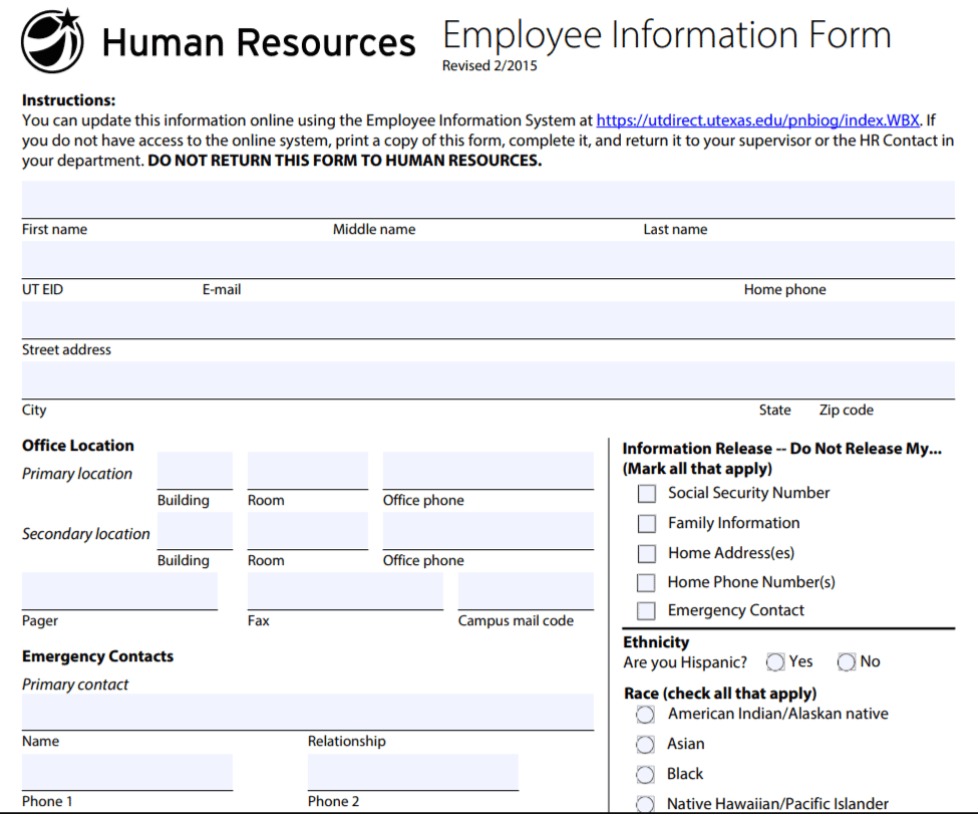
Tips and Best Practices
- Collect sensitive employee information via secure online forms.
- Strictly adhere to any data privacy laws.
- Consider setting up a secure portal to collect, track and store employee information.
- Establish clear policies and guidelines detailing how to securely handle employee information.
5. Payroll and Benefit Forms
Payroll and benefit forms allow you to collect all the necessary information needed to pay a new employee, register them for benefits or collect taxes on their behalf. As they are typically government-mandated, getting a new hire to complete without delay ensures compliance with your local labor laws.
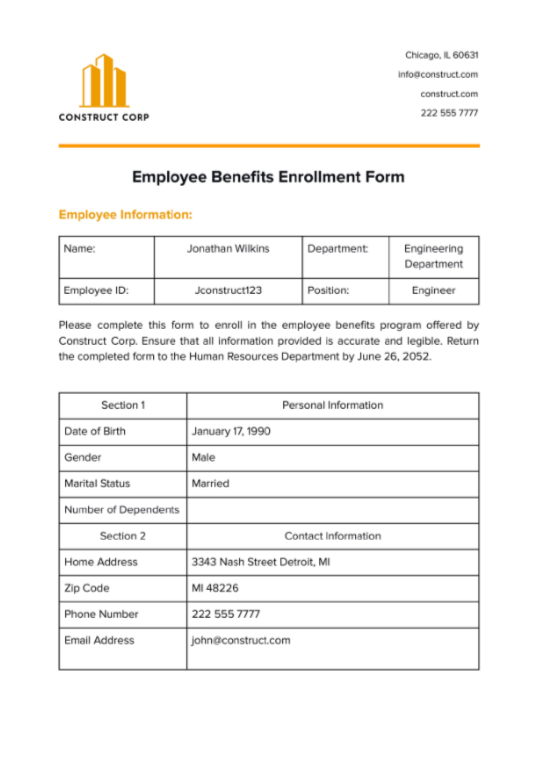
Tips and Best Practices
- Ensure new employees understand pay dates, benefits and deductions
- If your company offers any benefits beyond the standard, explain them.
- Always check in with new hires after their first paycheck in case they have any concerns or questions.
6. Legal Forms
Legal forms are those which an employee is required to complete by law. Depending on your location, this may include tax or work eligibility forms. These important documents ensure compliance with local labor laws, protecting your company against costly legal action.
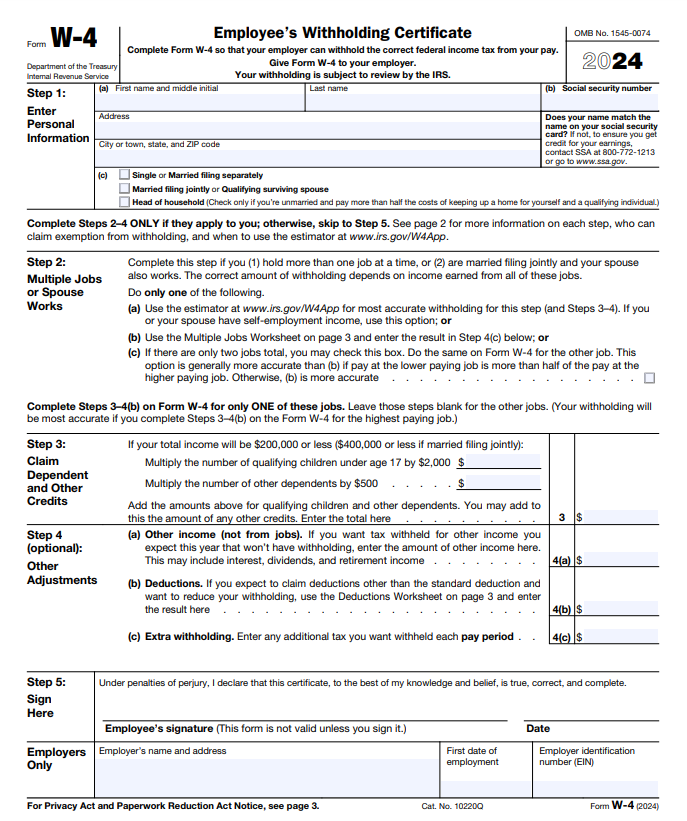
Tips and Best Practices
- Seek legal counsel to ensure full compliance with any location-specific laws and employment requirements.
- Stay up to date with changes to employment laws.
7. Welcome Documents
Welcome documents provide much needed clarity and guidance to new employees. Beyond making new hires feel valued, these essential documents facilitate introductions, provide key company information and outline what to expect for the first few days.
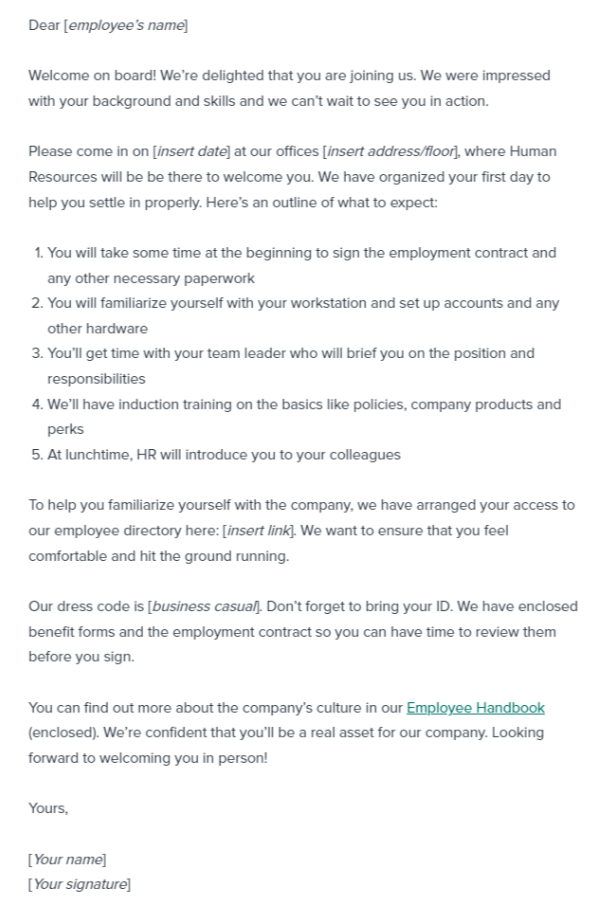
Tips and Best Practices
- Include branded company gifts for a personal touch.
- Provide helpful links and access to any company wikis, intranets, or knowledge bases.
- Add a welcome letter from the CEO to motivate and inspire new hires.
8. Onboarding Checklist
An onboarding checklist functions as a roadmap for a new employee's path to successful integration. It lists key activities and milestones, keeping everyone involved in the process on track.
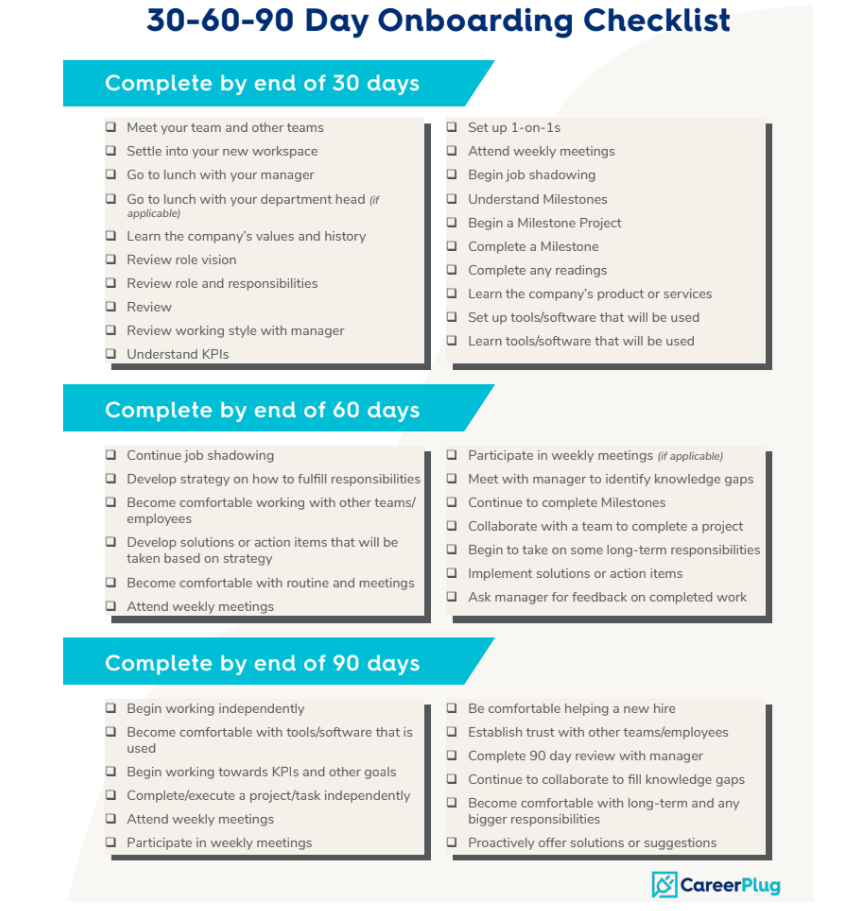
Tips and Best Practices
- Tailor onboarding checklists to specific job roles.
- Set reasonable timelines for task completion to avoid overwhelming new employees.
- Regularly seek feedback from new hires to optimize your checklists and onboarding process.
9. Employee Handbook
An employee handbook is a comprehensive guide and reference resource for new employees. It details crucial company information, sets clear expectations and fosters a positive work culture.
Key elements covered in this vital resource include:
- Company mission, vision and values
- Code of conduct
- Company policies
- Compensation, benefits and perks
- Employee rights and responsibilities
- Safety procedures
- Conflict resolution
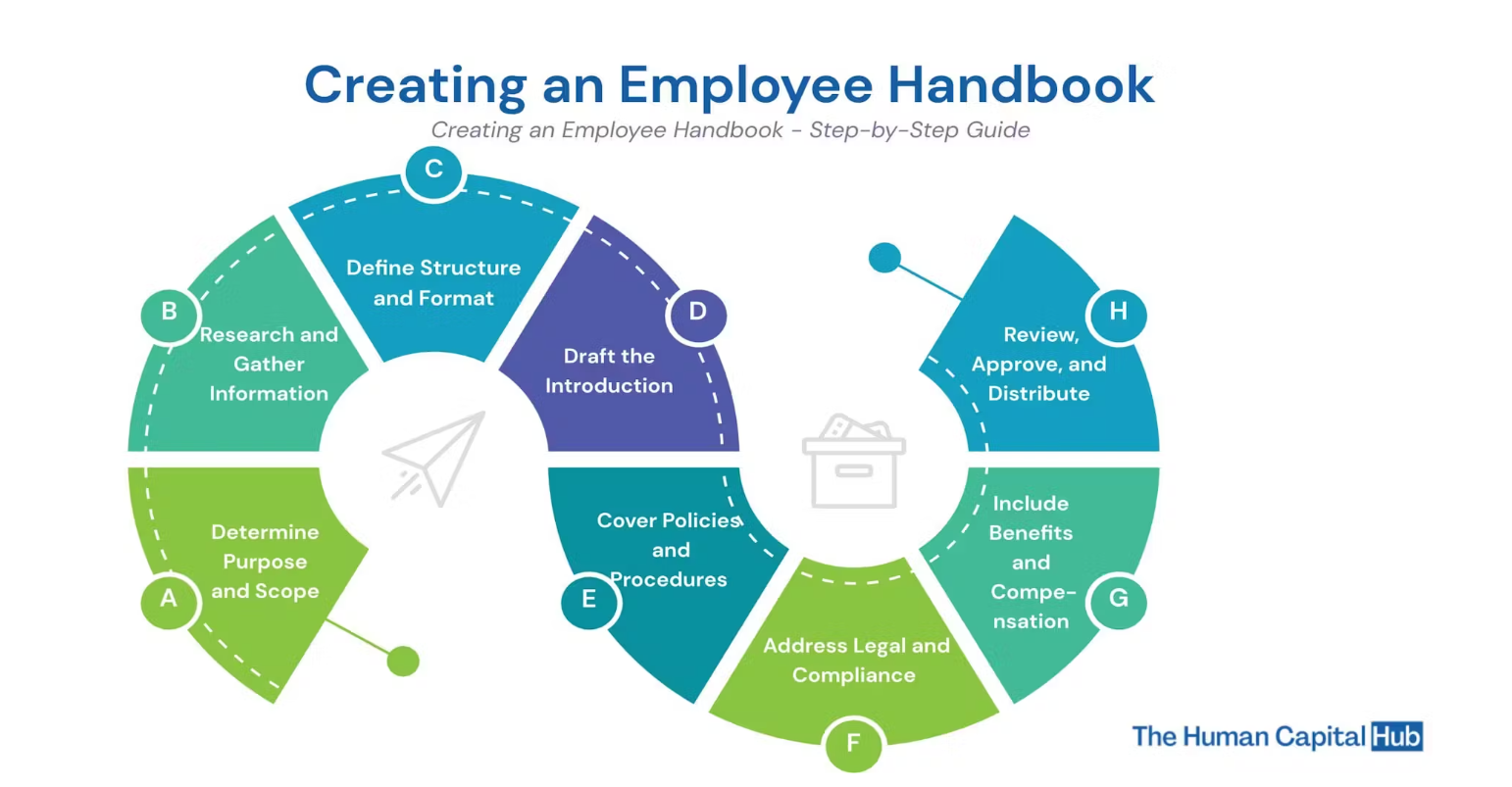
Tips and Best Practices
- Ensure your employee handbook is accessible and well-organized.
- Seek legal counsel to ensure compliance and accuracy.
- Provide practical examples of how important policies and procedures are applied in the workplace.
- Regularly update your handbook to ensure it keeps up with changing regulations and company policies.
10. Compliance Documents
Covering a range of topics such as safety, conduct and ethics, compliance documents play a crucial role in ensuring new hires understand and follow company policies, procedures and standards.
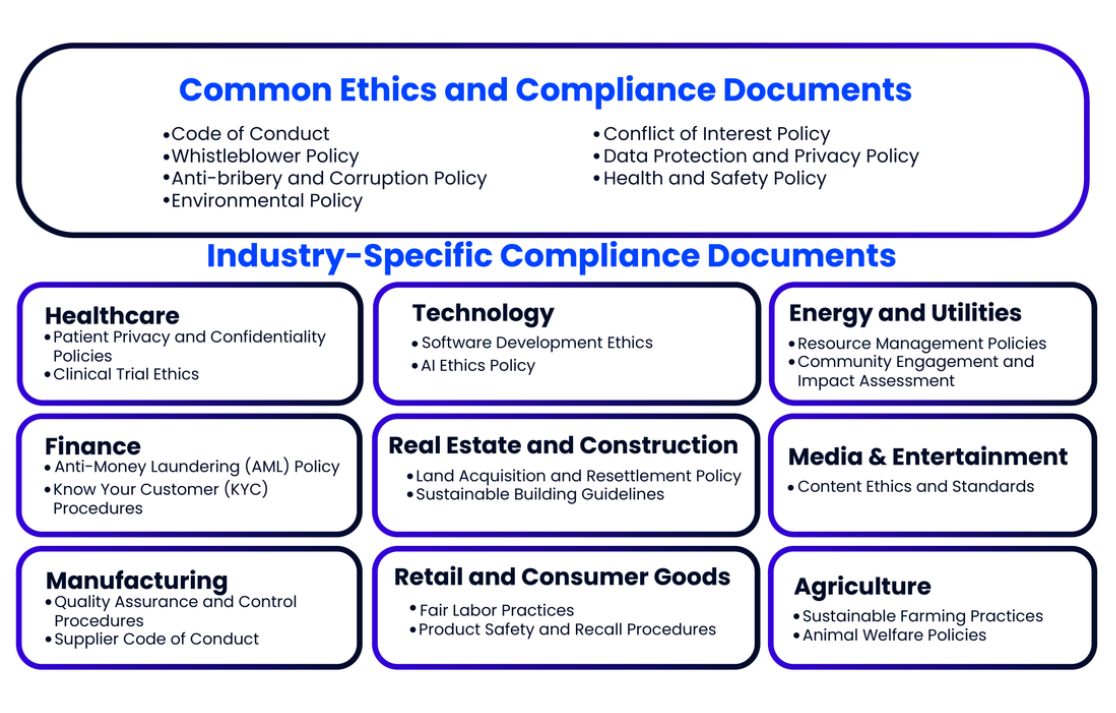
Tips and Best Practices
- Keep up to date with relevant laws, regulations, or industry standards to ensure your compliance documents remain accurate and up-to-date.
- Ensure compliance documents are reviewed by your legal team for accuracy, completeness and regulatory compliance.
11. Organizational Chart
An organizational chart provides a visual representation of your company structure. This handy reference helps new employees understand how the company works, who to report to and how they fit into the bigger picture.
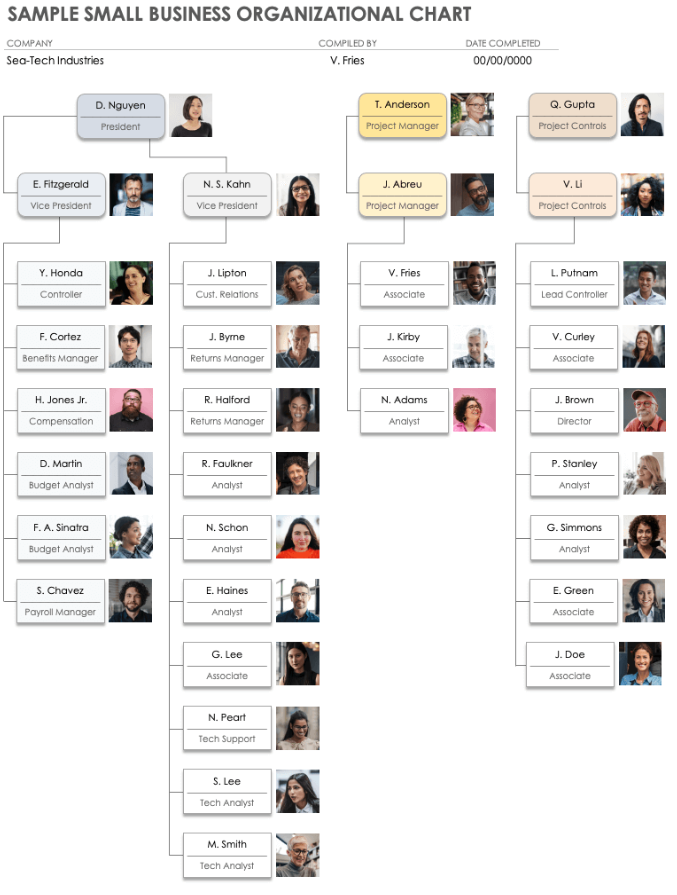
Tips and Best Practices
- Ensure that your organizational chart is simple and easy to interpret.
- Update your organizational chart regularly to reflect changes in roles, reporting structures, or new appointments.
12. Company and Event Calendar
A company or event calendar provides new employees with a schedule of company-wide events, holidays, important dates and deadlines. Making this valuable information available keeps new hires in the loop and helps them stay organized.
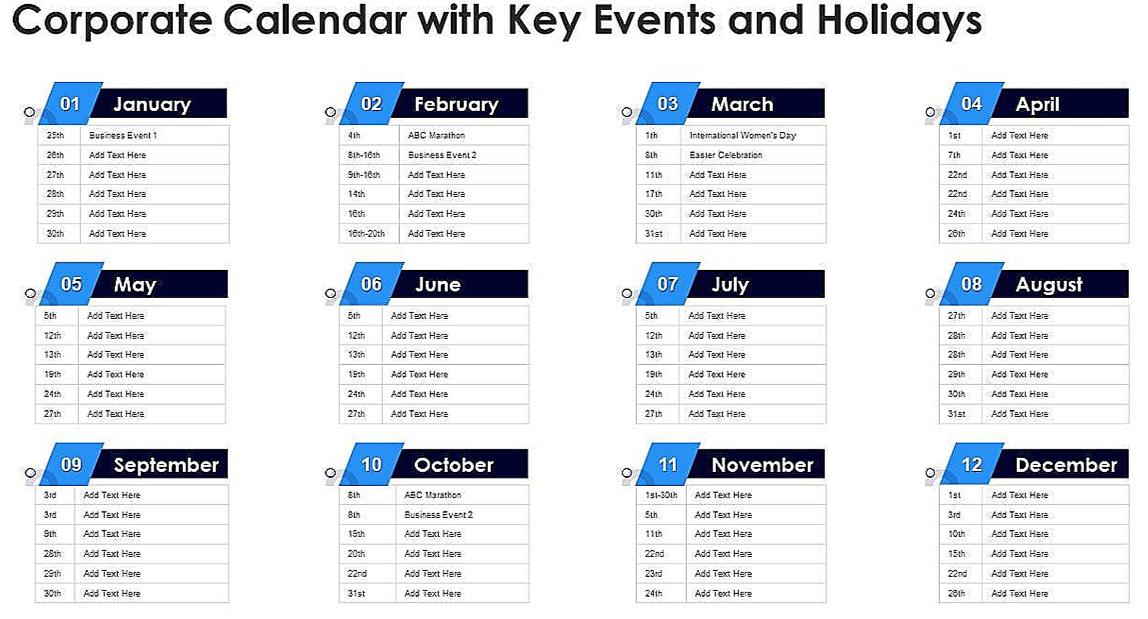
Tips and Best Practices
- Keep your company calendar organized and up-to-date to avoid confusion.
- Set up a system with alerts and reminders of upcoming events, meetings, or deadlines.
- Ensure employees can access the calendar from various devices.
- If you have employees in multiple time zones, ensure your calendar always reflects accurate times for the different locations.
- Explore calendar tools that offer easy updates, reminders and multi-device syncing for seamless management.
13. Company Guides
Company guides offer a unique perspective into your company's history, culture, philosophy and competitive position. Armed with this knowledge, new employees can do their jobs confidently, with a clear understanding of how their work contributes to the company's mission.
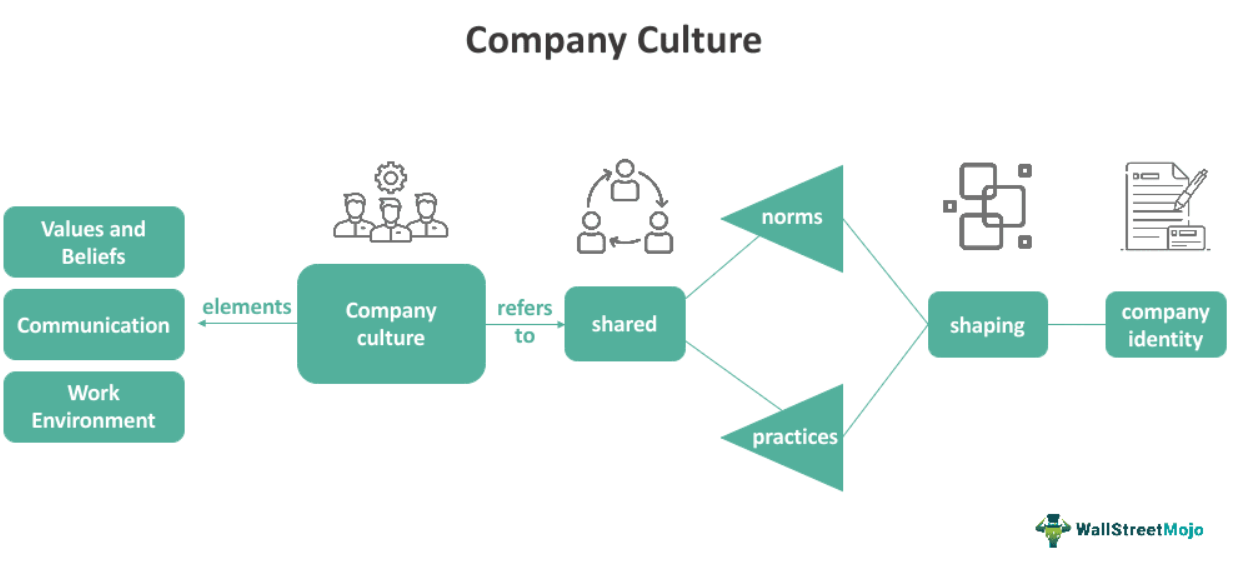
Tips and Best Practices
- Incorporate visual elements to increase read rates.
- Ensure your guides are accessible across a variety of devices.
- Keep guides updated to account for any changes in company policies and processes.
14. Self-Paced Guides
Self-paced guides are learning resources that empower new hires to learn new concepts at their own pace. This makes them ideal for clarifying concepts, reinforcing learning and building on-the-job skills.
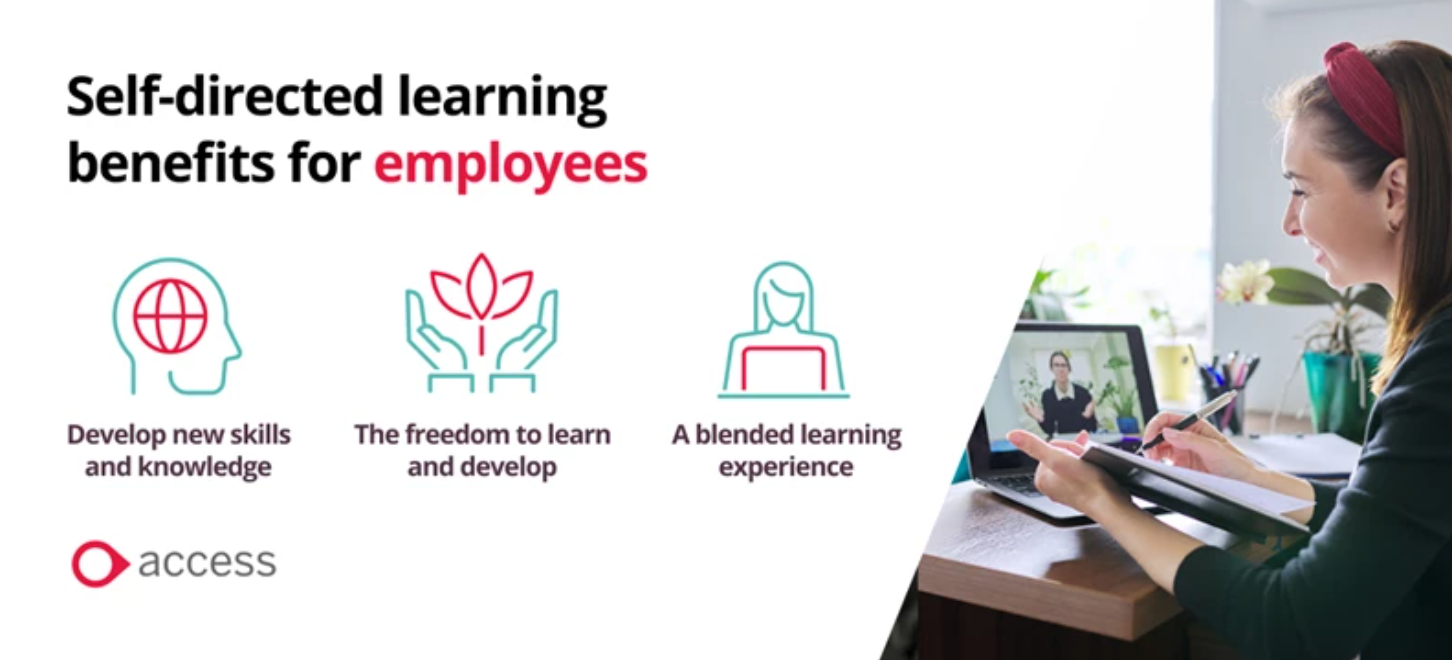
Tips and Best Practices
- Ensure self-paced guides are designed for easy navigation and learning.
- Organize and deliver your guides via an internal knowledge base.
- Craft practical guides that walk new hires through systems and processes.
- Use visuals such as screenshots and infographics to increase comprehension.
- Regularly seek new hire feedback to optimize your guides.
15. Training Manuals
Training manuals streamline the onboarding process and impart the skills new hires need to thrive in their roles. By supporting new employees through their formative months, these valuable resources boost productivity and foster confidence.
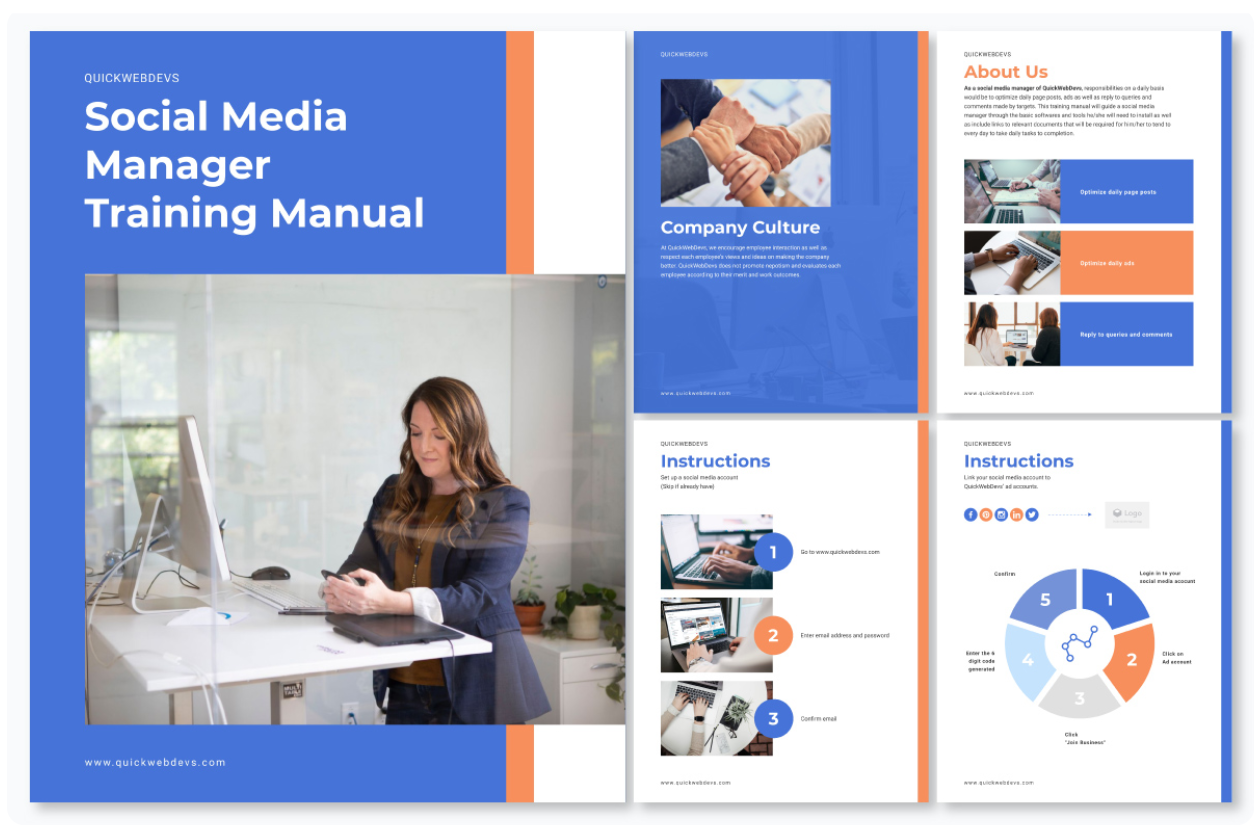
Tips and Best Practices
- Offer training manuals in a variety of formats to increase engagement and knowledge retention.
- Break complex concepts into parts for ease of understanding.
- Regularly update training manuals to reflect any changes in your policies, procedures, or technology.
- Incorporate diagrams, charts and screenshots to illustrate concepts and enhance understanding.
16. Process Documents
Process documents detail workflows or standard operating procedures. This provides vital step-by-step guidance for role-specific and company workflows. Giving new hires access to these valuable resources:
- Builds proficiency
- Increases efficiency
- Maintains consistency
- Boosts confidence and morale
- Reduces costly errors
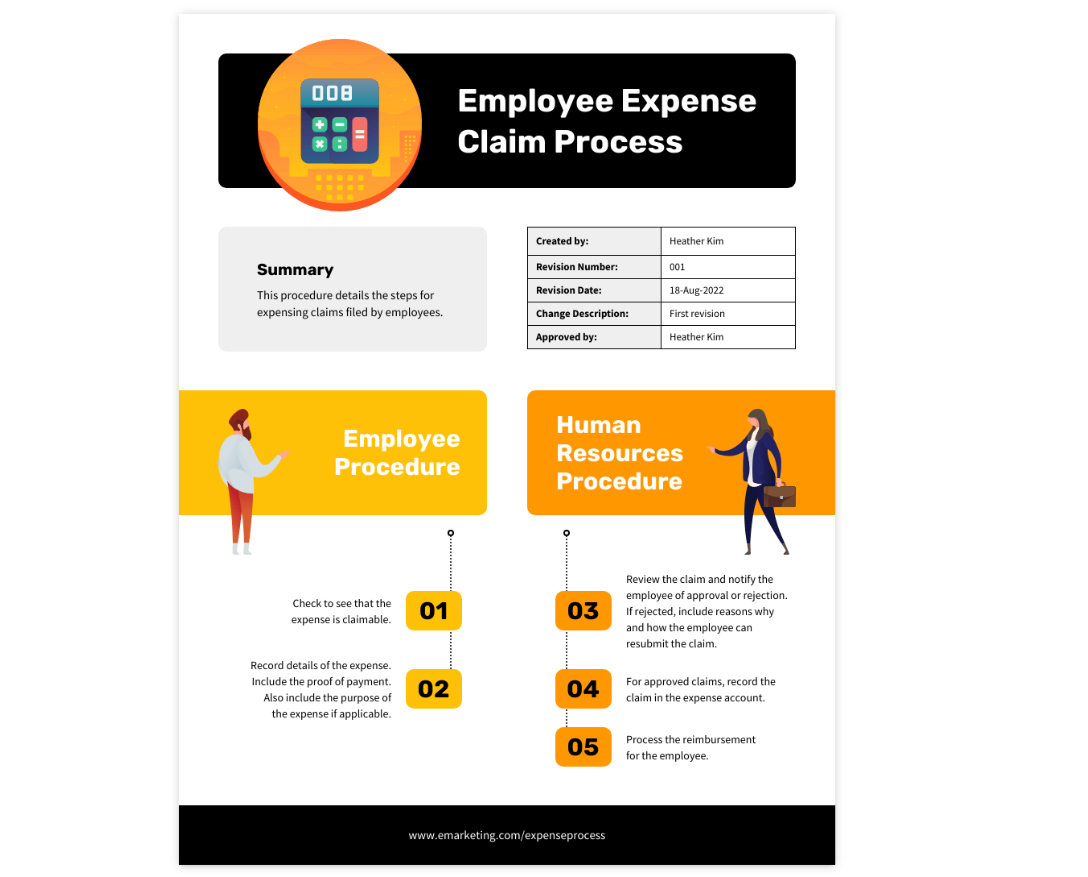
Tips and Best Practices
- Use different formats to appeal to different learning styles.
- Incorporate diagrams, screenshots and other visuals to increase comprehension.
- Keep process documents up to date to prevent misinformation and costly errors.
- Set up a centralized location where employees can easily access the latest versions of your process documents.
17. Support Resources
Comprehensive support resources reduce stress and promote a positive employee experience. Key examples include:
- Lists of key departmental contacts
- Mental health resources
- Mentorship information
- Other role-specific materials
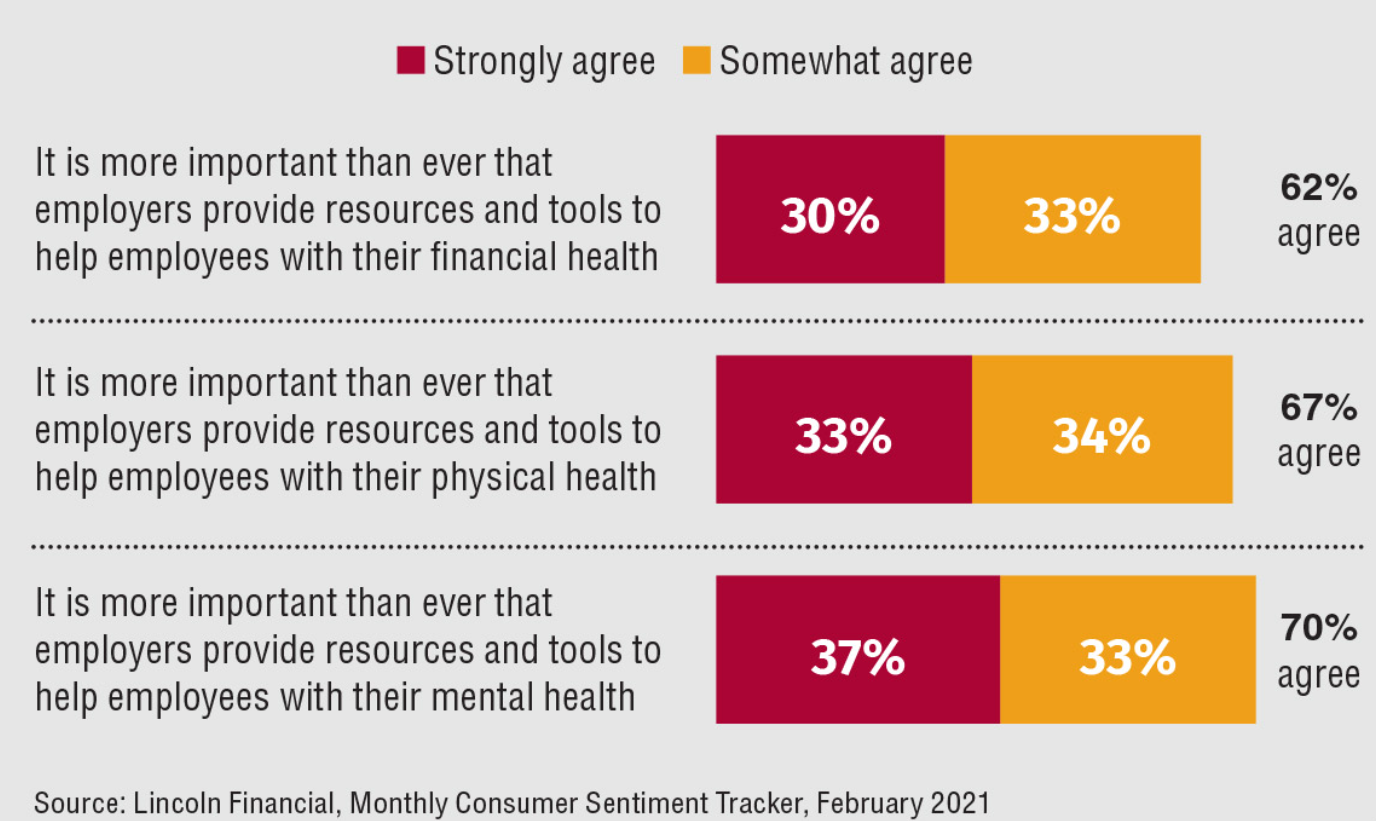
Tips and Best Practices
- Make support resources easy to find and use.
- Tailor support resources different job roles.
- Ensure new hires have access to mentors or buddies for additional guidance and support.
18. Product Guides
Product guides provide in-depth knowledge of your products and services. With a deep understanding of product features, benefits and applications, new employees have the edge they need to excel in their roles.
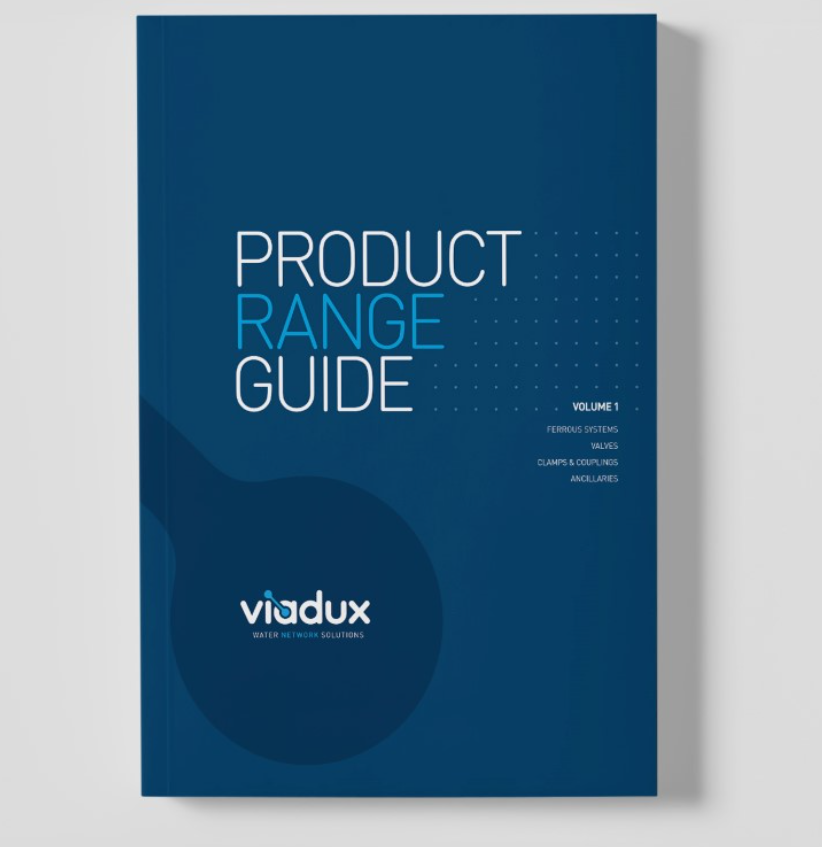
Tips and Best Practices
- Ensure that product guides are easy to find and use.
- Incorporate interactive elements like quizzes and assessments to increase engagement and reinforce learning.
- Keep your product guides up to date to reflect changes to your product offerings.
19. Feedback and Review Forms
Feedback and performance review forms streamline the collection of valuable insights from new employees, their teammates and superiors. They keep track of new hire performance, encouraging reflection and a growth mindset. Beyond tracking employee progress, feedback and review forms provide valuable feedback to help improve your onboarding process.
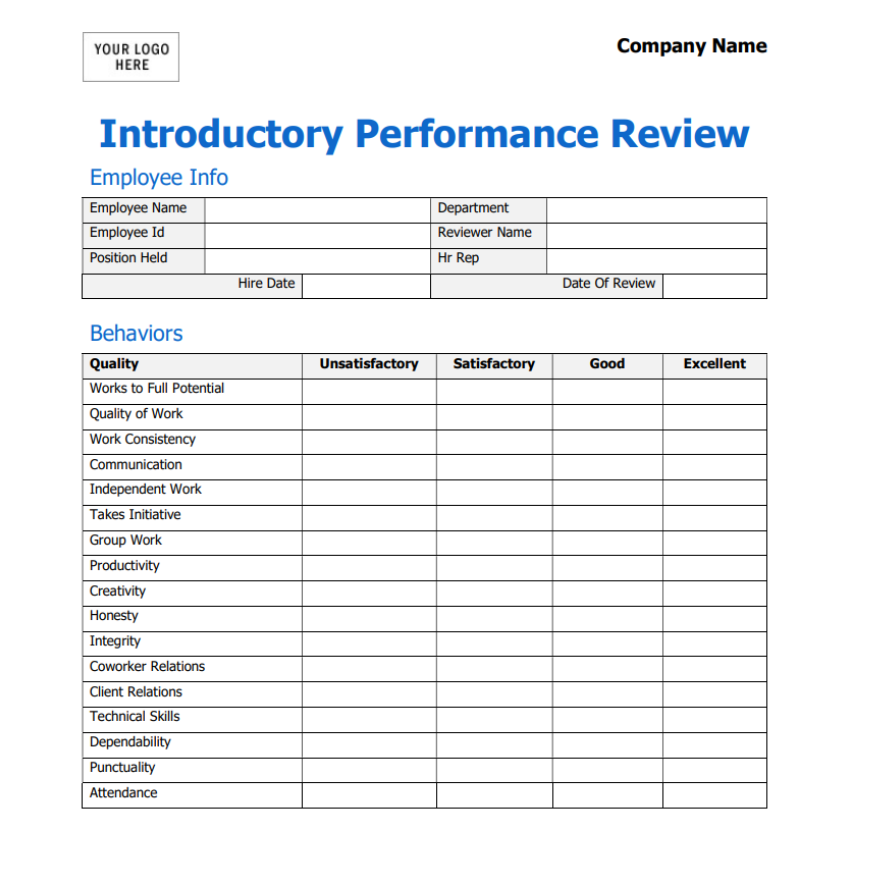
Tips and Best Practices
- Get buy-in from new hires by explaining the value of review and feedback documents.
- To eliminate stress and confusion, ensure new hires know how and when to use these documents.
Brand Toolbox
A brand toolbox covers everything new employees need to know about your brand. This includes your unique brand story and what sets you apart from competitors. It also covers your brand voice and how best to interact with customers. Ensuring that new employees understand your brand is a crucial step in delivering consistent customer service. And this, in turn, fosters brand loyalty.
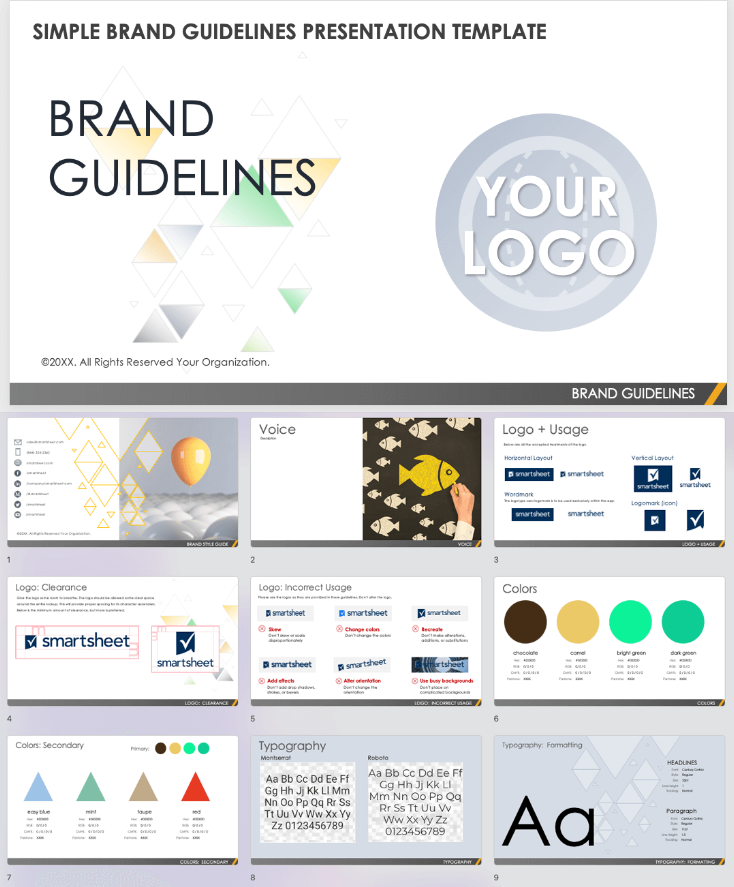
Tips and Best Practices
- Keep your brand toolbox up to date to accurately reflect your unique identity.
- Ensure that your guide is easily accessible.
- Provide examples detailing how to express your brand across different channels.
Wrapping Up
You only have one opportunity to make a lasting impression on new employees. Make it count — not only with an efficient onboarding process but with informative documents that instill confidence from the first day.

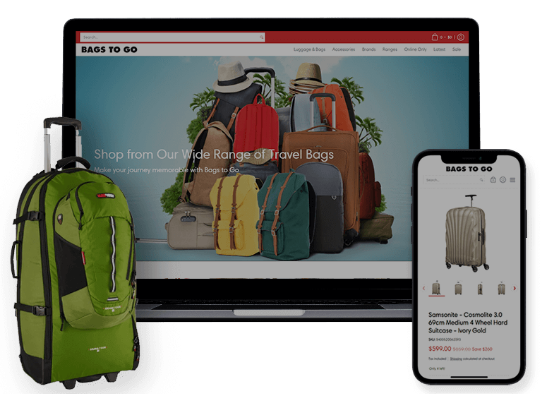
.jpg)